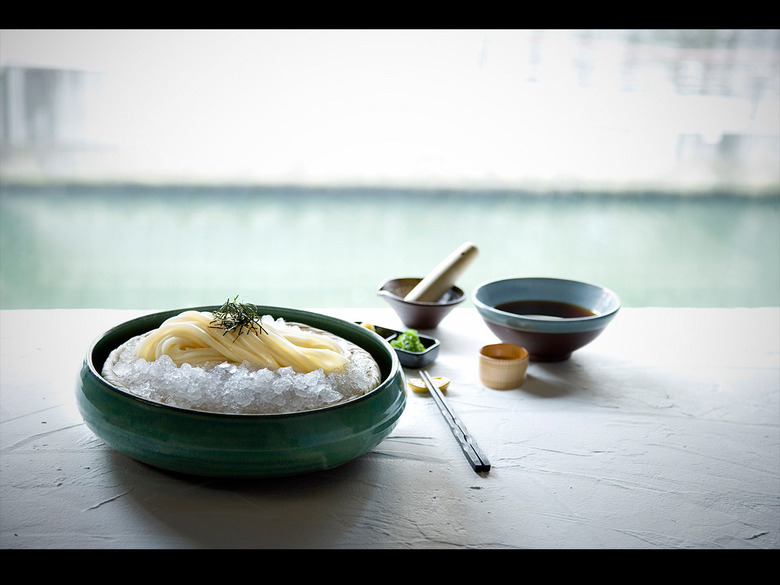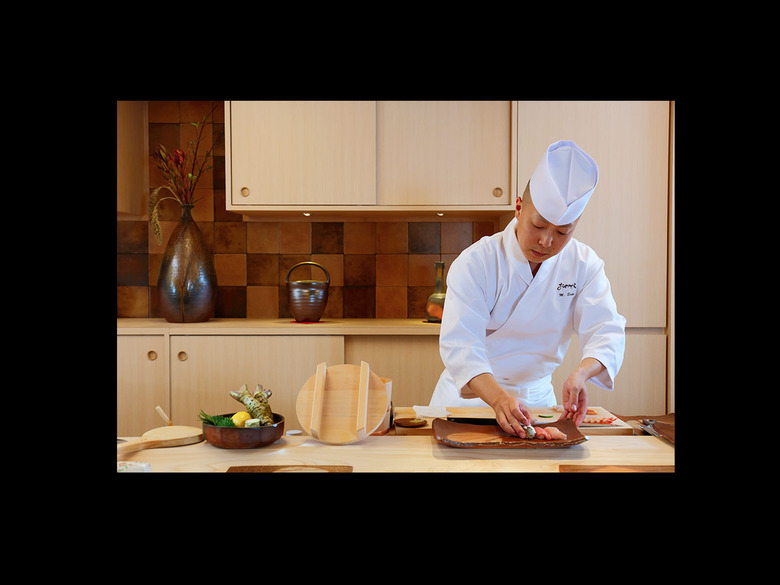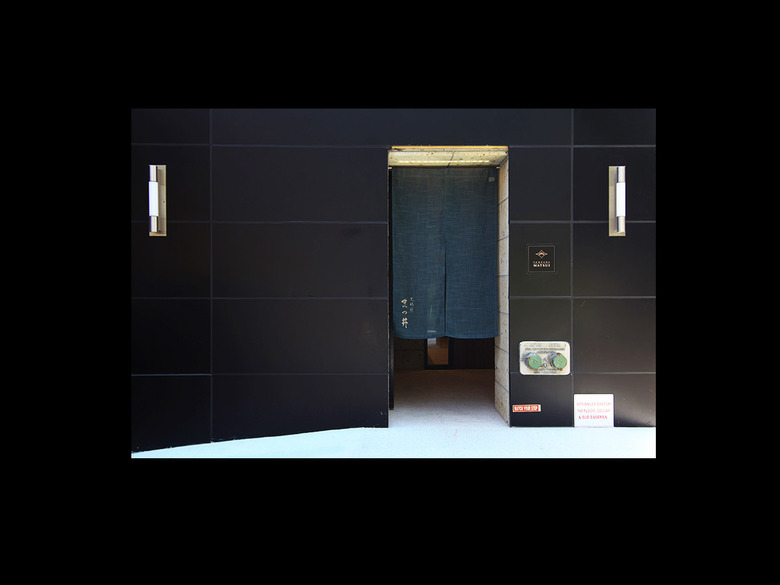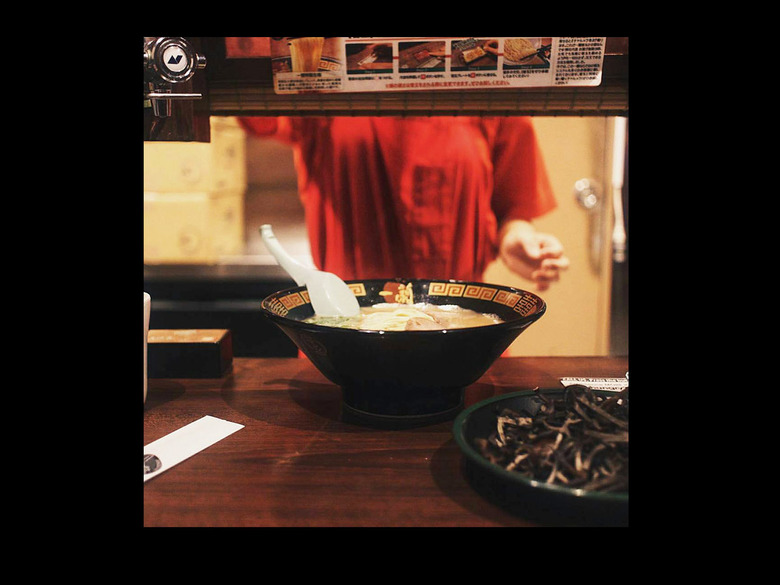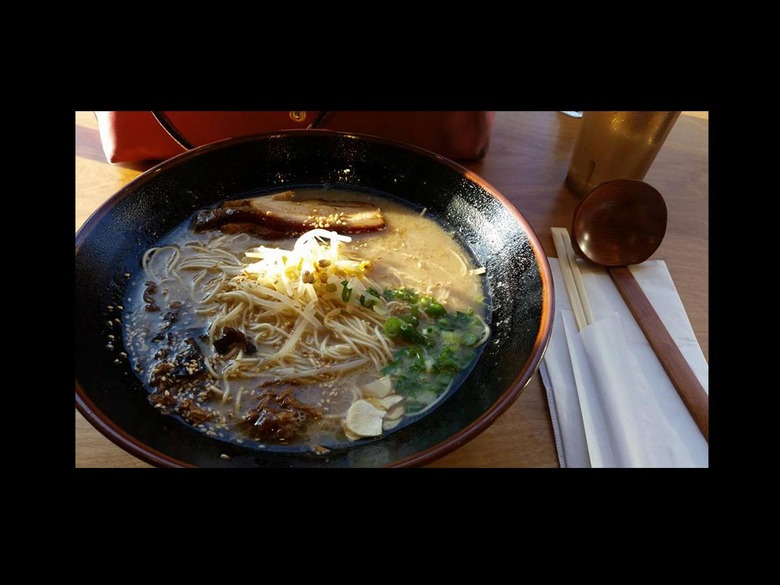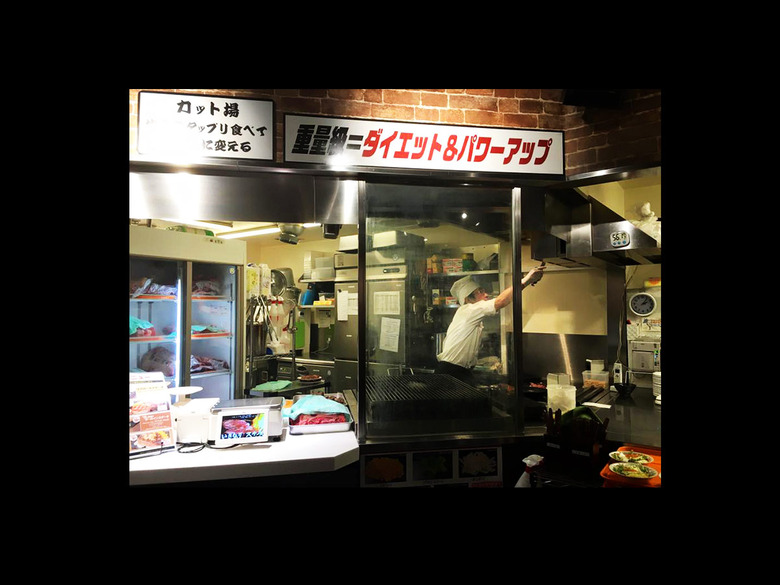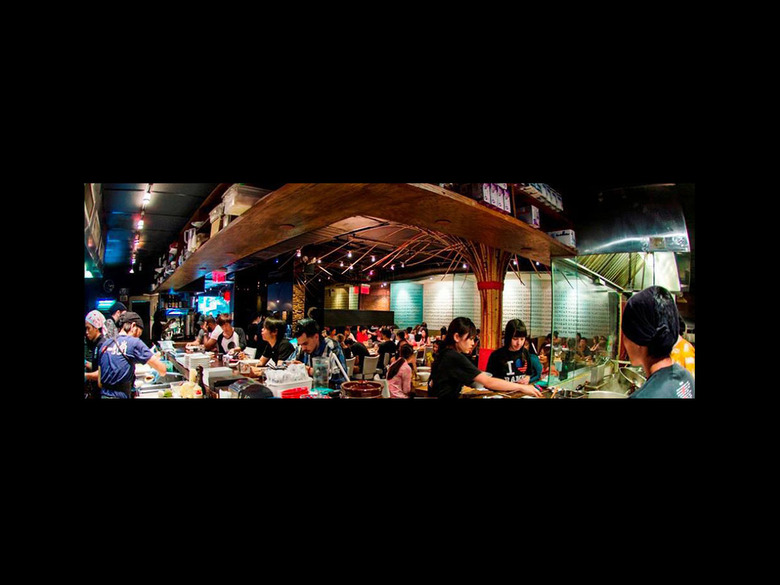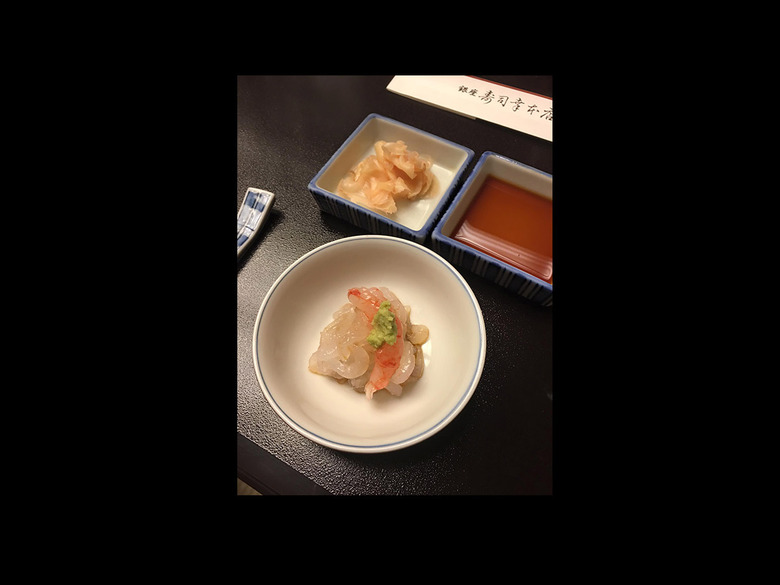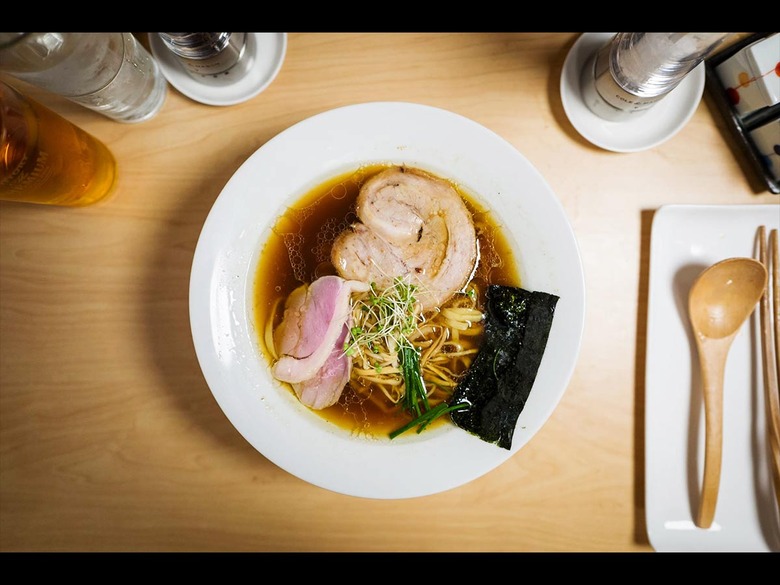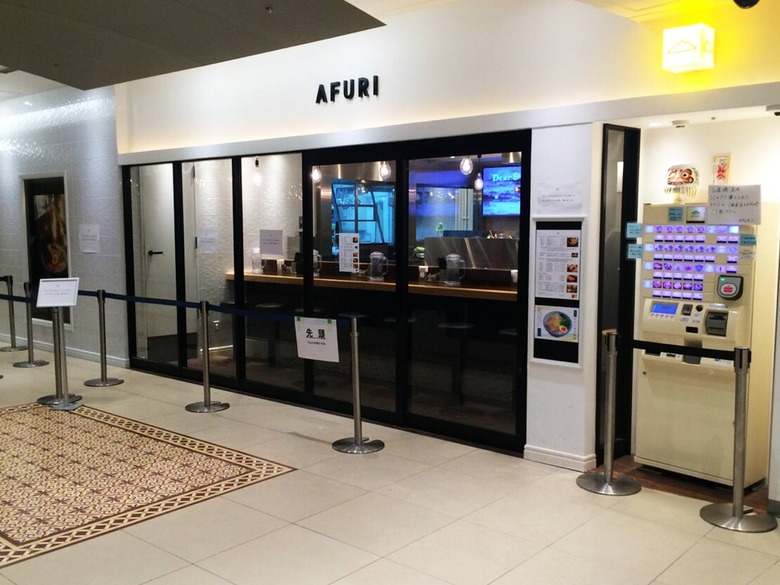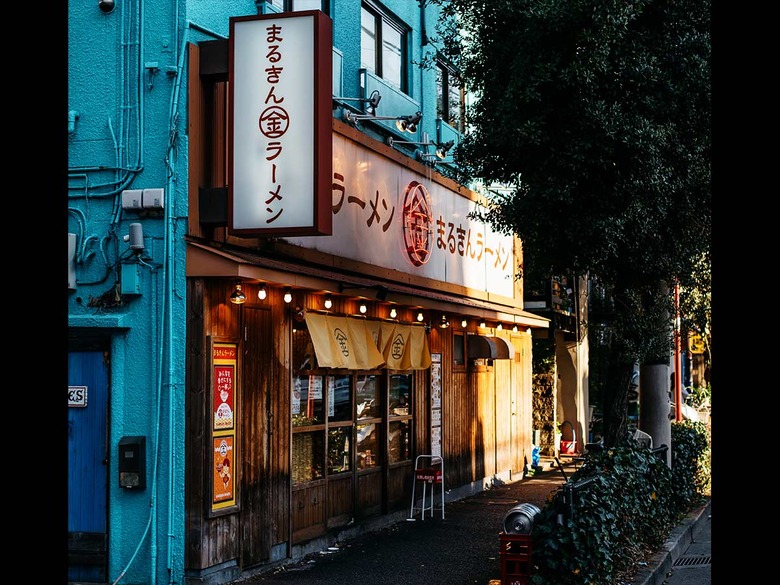The Rise Of Japanese Restaurant Chains In America: Ichiran, Afuri
Japanese restaurant chains are conquering the U.S., but there's more to it than ramen
The hotel trays of rosy beef nestled above pinwheels of oranges are nearly depleted. Vest-clad waiters swiftly remove glass bottles of Coke from the white linen tables at Empire Steak House in Midtown East as Shigeko Fuke, the director of La Fuente, a Japanese restaurant business consulting group, leans over to Steven Hall.
"You want to say something?" she asks politely, though clearly enough to command the attention of the 30 or so Japanese professionals hailing from brands like Asahi, Zundo-ya and one Japanese bank, all neatly packed into the steakhouse's plush private room. Hall, the founder of restaurant-focused agency Hall PR, nods graciously.
"It's very nice to meet everyone, and thank you all for coming," he says. "I'm very happy to talk about my favorite subject, which is how to expand Japanese restaurants here."
It's the first time Fuke and Hall have offered this crash course on how to open a Japan-based restaurant in New York City in this very city. Scrolling through kanji-riddled lists and photos of "Ahnderu" Carmellini, Fuke highlights the city's dining trends (fast casual, French) and general turf with suggestions ("Japanese food is still new to Harlem," she says. "No competition."). The two have done this same presentation a few times before in Japan, but this one seems more calculated and weighty. It's nurturing the new tide. The Japanese are here, bringing their big restaurant chains like Ichiran and Tsurutontan; smaller ones like Sushi Ginza Onodera and Marukin; and overall, their masterful craft and nuanced regional dishes now that they feel Americans can appreciate it, such as Marukin's elegant chawanmushi (see the recipe). And they're starting with New York City.
 Curry udon from Tsurutontan | Photo: Courtesy of Tsurutontan
Curry udon from Tsurutontan | Photo: Courtesy of Tsurutontan
"They realize that, in Japan, the brand doesn't get exposed to that many people, so it's really about business," Hall explains to me another day over lunch at his client Ootoya, which serves the Japanese businessman's lunch made luxe here in Union Square. "They have strong plans of growth. They watch. They see the success of other places. And they want to be part of it."
"They" are nearly a dozen Japanese-based restaurants that have landed on American soil within the past year or are planning to in 2016 (browse the full list below). They range from single-specialty outlets like the white-hot Tempura Matsui, which serves lightly battered and fried things, to Osaka's Tsurutontan, which is nestling wonderfully fat and flabby udon noodles over ice at the old Union Square Cafe in New York City. And we'll also be seeing the beloved hallmarks of Japanese cuisine, like Sushi Ginza Onodera's high-end sushi in both Beverly Hills and New York City, and more ramen with the arrival of hallowed noodle chains like Ichiran in Brooklyn's Bushwick neighborhood and Afuri in Portland, Oregon.
Talk to anyone about the new wave of Japanese entrepreneurs, and he or she will point to Ippudo as an inspiration. ("Yes, yes, yes," Korechika Kikuchi, the section chief of overseas business development for dashi maker Kayanoya, says when asked if its success motivated him to explore New York for expansion.) The Fukuoka original found a way to turn the salaryman's sloppy after-work dinner into something sleeker and more stylish. Owned by Chikaranomoto Holdings Co., Ltd., a Japanese restaurant group with bakeries and catering companies also under its belt, the now 60-plus-shop-strong Ippudo made its maiden voyage to the States in 2008 and set up shop in the East Village (and now has a second location in Midtown).
"They had all the top guys from Ippudo fly in and work 100-hour weeks. And to everyone's pleasant surprise, it exploded," Jeff Hsu, the operations manager at Ippudo, explains over the phone. "I'm sure without a doubt Ippudo's success has been sort of an example or some sort of encouragement. They're thinking, 'If something so specific as ramen can be enjoyed by New Yorkers, maybe we can try this.'"
However, there's more to it than just living out that dream of making it big in the Big Apple, though it's certainly a factor. The real question is: Why is the Japanese expansion happening now?
Well, we can speculate, but there are numerous reasons. First, let's start big: the Trans-Pacific Partnership.
 Inside Tempura Matsui | Photo: Courtesy of Tempura Matsui
Inside Tempura Matsui | Photo: Courtesy of Tempura Matsui
This month, Australia, Canada, Japan, Malaysia, Mexico, Peru, Vietnam, Chile, Brunei, Singapore, New Zealand and the United States signed the Trans-Pacific Partnership, a trade agreement among the Pacific Rim countries to promote economic growth and governing transparency. It's a top priority for the Obama administration and, though it's been in negotiations for the past seven years and not yet enforced, TPP means one thing for these Japanese restaurants: reduced tariffs. So it will be easier to get that special bonito blend or finely milled flour for their craft here in the U.S., and it may be a reason why a guy like Kikuchi might be interested in attending Fuke and Hall's presentation.
Second is the Japanese government.
"The Japanese population is aging, so the market will shrink," Nori Akashi, the public relations manager at the Japan National Tourism Board, says. "There may be more restaurant owners considering reaching out to overseas markets to survive."
And the government is helping with the Cool Japan Fund, a business development initiative founded in November 2013 with "the aim of supporting and promoting the development of demand overseas for excellent Japanese products and services." Their capital is 40.7 billion yen ($360 million), and the investment portfolio is divided equally into categories: media and content, fashion and lifestyle, and food and services.
"Whether it's a restaurant or an art store, as long as they're for the Japanese culture, they can be selected to go out and represent Japan with the backing of the Japanese government," Kenshiro Uki, the vice president of operations at cult ramen noodle maker Sun Noodle, says over the phone.
"Incentivize," George Kao, the director of sales for Sun Noodle North America, quickly jumps in. "There is cash injection to help promote a loan. Food has become one of the main drivers for the exportation of Japanese goods."
If you look into case studies of Cool Japan Fund's projects, you'll see at least one familiar name: Chikaranomoto Holdings Co., Ltd. (read: Ippudo). Back in December 2014, Cool Japan gave the chain 1.3 billion yen ($11.5 million) "toward the opening of Hakata Ippudo branches in major Western cities." Interestingly, the 2020 Summer Olympics are mentioned in the release, which are taking place in Tokyo, and clearly indicate the government is thinking about the future and attracting customers now.
Lastly, there are the parent companies.
"I think it's kind of obvious why big companies are coming. It's hard to go 10,000 miles away and have the money to sustain a new business," Ivan Orkin (aka Ivan Ramen), the Long Island native who made his name in ramen in Setagaya in 2006, later expanding back to his homeland in 2014, says. "They have a lot of money. Almost all of [these restaurants] are here because someone is licensing them."
These larger companies can afford to invest the time, money, equipment, training and everything else costly to bring their craft here to the States. Just a few weeks ago, Tsurutontan flew in the head chefs of the 12-restaurant chain to play with local flour and test New York's water to make their udon. (The verdict: American flour is not fine enough, but the soft water is close enough to Osaka's.)
 Prep at Marukin | Photo: Mark Shimahara/Marukin
Prep at Marukin | Photo: Mark Shimahara/Marukin
And though the words restaurant chains leave a bad taste in Americans' mouths, chains are of a different breed in Japan. For how difficult it is to find that sushi counter hidden in the depths of a Ginza high-rise, uncovering which parent company owns these restaurants is surprisingly easy—and rather transparent. A quick click down the rabbit hole on a restaurant's site will show in the most organized way that, yes, Tsurutontan is owned by Kato Pleasure Group, a hotel group often in the media for its "love" hotels, and that Chikaranomoto Holdings Co., Ltd. brings in annual sales of 10.7 billion yen ($94.8 million).
"We have a stigma that when you open a chain, it's not good. There is no stigma there," Mitchell Davis, the executive vice president of the James Beard Foundation, says. "The way we think about it being weird that a car company owns a ramen shop, it's a cultural distinction. You can do all these things well, because you're holding them and you're not making corporate decisions about how to make air bags and ramen noodles."
Hall has a saying for this that he's held onto ever since he fell in love with Japanese food and made it his mission to bring it over here to the States.
"Somebody said to me, 'Japanese people, if it's not in our DNA, we don't make it well. So we'd rather buy it than make it,'" Hall says. "Some brands kind of create themselves; some brands purchase because they want to learn. They buy it to learn how to do it—and do it better."
And interestingly enough, the same thing is happening in the opposite direction: Transit General Group and TSI Holdings, companies that operate the top fashion brands, are bringing in Dominique Ansel to command new iPhone model-worthy queues at a new Tokyo bakery. However, Hall cautiously warns that the exact same restaurant can't necessarily be replicated in Japan or vice versa.
RELATED Japanese Dashi Egg Custard "
"When someone like me comes in and tells them, 'You need better lighting and more atmosphere,' to them, it's like, 'Really?' Because back home, none of that matters," he says.
Here in the States, the menu must be more expansive than mere noodles, the ambiance a little lusher and the bar fully stocked. Naturally, the recipe for their iconic dishes changes, too, to accommodate the environment.
"Americans eat ramen slower and drink the soup first," Masaji Sakai, the chef at Marukin, says. "This means that we must take into account the temperature of the soup served and the contents of the noodles so that they have the proper texture and taste with regard to the different temperature and time they are in the broth while eaten."
And it's a challenge these Japanese chefs are only happy to take on, if it means sharing their lifelong work to a larger and more curious audience.
"The Japanese market is so saturated that other big chains are looking for other markets. Ippudo was the first to come, and you can't get in there still," Davis says. "Ramen is a gateway food in that obsessing over ramen, you learn a little more about Japanese food culture, and it opens your mind."
"Yes, Ippudo did open the door for Americans," Joji Uematsu, the vice president of dining innovation at Tsurutontan, says. "They did a really good job, and since then, there are over 50 ramen restaurants in the city."
So the thinking is that, due to this initial acceptance, now may be the time to introduce more niche dishes, like wobbly udon, or standing steakhouses, like Ikinari Steak, the kind you'd find at Japanese train stations and which is opening right by the original Ippudo. And this new embrace allows people to dream; Hall hopes for legit teppanyaki; Davis is on the lookout for curry-yas and great tonkatsu spots. And some, like Afuri and Marukin, are looking farther west.
"When people call me up and say, 'We want to open up,' I keep telling them there are more places than New York," Hall says. "I think we'll see more in Portland. The Japanese tend to gravitate toward the areas that attract attention."
This is just the tip of the iceberg. Most restaurants beyond the dozen we know of are pretty hush-hush at the moment, as yet-unnamed chains are in the middle of looking for spaces or are acting coy, like Ippudo hinting at expanding to a region where customers are begging them to set up shop. But for longtime Japanese food lovers, this is the most exciting time, because these once-undiscovered dishes and masters are finally in the spotlight.
"They feel that the average consumer can appreciate all their hard work. To be part of the movement for these master chefs to travel and set up shop in the States, we're just really embracing the ride," Kao says. "Every day we kind of look at each other and wonder, 'Is this happening? Did this particular chef call us and talk about ramen in hopes of coming here?'"
Only time will tell.
Find Ootoya here, or in our DINE app.
Find Tempura Matsui here, or in our DINE app.
Find Ippudo here, or in our DINE app.
Find Ivan Ramen here, or in our DINE app.
TsurutontanLocation:Status:
New York City
Opening June 2016
It is udon's time to shine at this Osaka-based chain. The fat, chewy noodles will be made in-house by the 25-year-old restaurant with 12 locations, and the American menu will feature sushi, sashimi and fancier sake.
Sushi Ginza OnoderaLocation:Status:
New York City and Beverly Hills
Any day in New York City and this month in Beverly Hills
Technically, the first outpost of the ultra-luxe sushi spot opened in Honolulu two years ago, but now master chef Akifumi Sakagami is on an opening roll, launching two more locations in coastal hot spots: Manhattan's glittering Fifth Avenue and Beverly Hills.
Tempura Matsui
Location: New York City
Status: Open, with a Michelin star under its belt
Ootoya America led the late chef Masao Matsui to live his dream of opening this temple to battered and fried things in New York, and now Matsui's second in command (and pupil of 20 years), Shin Kato, continues his legend.
IchiranLocation:Status:
Bushwick, New York City
Opening summer/fall 2016
Slurping, silence and red sauce are coming to Brooklyn by way of legendary tonkotsu ramen maker Ichiran. It's been a long time coming for the nearly half-century-old, 53-shop-strong chain; it originally set up in Greenpoint back in 2007, but nothing ever came of it. The chain is notorious for its individual dining booths, one way of focusing diners on flavors.
Mr. Taka RamenLocation:Status:
New York City
Open, with lines out the door
Yuzu shoyu ramen has taken the city by storm, and Takatoshi Nagara made his name with the light, citrusy soup at Bigiya in Japan. He flutters from each ramen-ya every few months to maintain consistency, and soon, the Takas (including business partner Takayuki Watanabe) hope to make their own noodles.
Ikinari SteakLocation:Status:
New York City
Opening summer 2016
The art of the Japanese salaryman's standing steak is coming to the East Village, number 40 in the chain. Ginza's trendy, no-frills meat counter serves pristine beef on a hot griddle that continues to cook as it's brought to you.
Zundo-yaLocation:Status:
New York City
Open
The Himeji ramen chain's iconic ajitama (soft-boiled eggs, pickled to take on vermillion-hued yolks) is right by Ippudo, but its plans for expansion are vast: 1,000 franchises in the future and across the world. Right now, they're at 20 with this location.
IppudoLocationStatus:
: New York City (and beyond)
Open in NYC, perhaps later this year for others
Fukuoka's famously fatty and lip-coating tonkotsu still draws hourlong waits after seven years in the business in New York. Next up for the 60-plus-shop chain is expanding to a much-requested region, but they're mum on exact location.
Sushiko HontenLocation:Status:
New York City
TBD
A tip from Korin's founder Saori Kawano, this 130-year-old sushi counter is supposedly bringing the theater of perfectly cooked rice and fatty chu-toro to the city.
MenshoLocation:Status:
AfuriLocation:Status:
Portland, Oregon
Opening spring 2016
Ebisu's mini chain of shio- and shoyu-doling ramen-yas is a coup for the Pacific Northwest, amid the huge influx into New York City. Now the West Coast will get some yuzu shoyu action, too.
MarukinLocation:Status:
Portland, Oregon
Opening March and April 2016
Not a typo: The passion project of sheet metal maker Masa Hayashi and engineer Hiroshi Kusuda is opening two locations of their Hakata-style ramen-ya. Chefs Masaji Sakai and Mayumi Hijikata man the kitchens, twirling out beautiful noodles and an ethereal chawanmushi (see the recipe).


